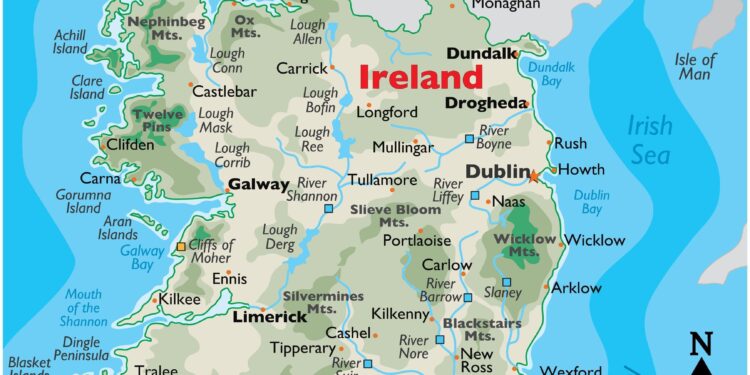Ireland has announced a significant boost to its Research and Development (R&D) tax credit, increasing the rate to 35% in a decisive move aimed at strengthening innovation and attracting greater investment. The government is also considering expanding the scope of the credit to cover a broader range of activities, signaling a renewed commitment to supporting cutting-edge industries and enhancing the country’s competitive edge in the global market. This development comes as part of Ireland’s ongoing strategy to foster a vibrant research ecosystem and stimulate economic growth.
Ireland Boosts R and D Tax Credit Rate to Enhance Innovation and Competitiveness
In a decisive move to foster innovation and sustain Ireland’s competitive edge in the global market, the government has increased the Research and Development (R&D) tax credit rate to 35%. This enhanced incentive is aimed at encouraging more businesses, especially startups and SMEs, to allocate resources towards cutting-edge research and technological development. Industry experts anticipate this change will not only stimulate investment in high-value projects but also bolster Ireland’s reputation as a dynamic hub for scientific advancement.
Alongside the rate increase, policymakers are actively considering broadening the scope of qualifying activities to include emerging sectors such as artificial intelligence, green technologies, and digital transformation. Key highlights of the updated framework include:
- Increased claim potential: Higher credit percentage boosts funding availability.
- Expanded eligibility: New sectors and expenditures under review for inclusion.
- Streamlined application: Simplification of procedures for claiming the credit.
| Year | R&D Tax Credit Rate | Projected Economic Impact |
|---|---|---|
| 2023 | 25% | €500 million investment boost |
| 2024 | 35% | Estimated €800 million+ in R&D spend |
| 2025 (Forecast) | 35% + Expanded Scope | Potential €1 billion investment |
Government Considers Expanding Eligible Activities to Broaden Tax Credit Benefits
The Irish government is actively deliberating on broadening the range of activities eligible for the enhanced 35% R&D tax credit. Officials aim to include innovative practices beyond traditional research and development, potentially incorporating areas such as digital transformation, sustainability initiatives, and advanced data analytics. This expansion could unlock new incentives for a wider spectrum of businesses, encouraging investments in cutting-edge technologies and environmentally conscious projects.
Key proposed additions currently under review include:
- Green technology development focused on reducing carbon emissions
- Software engineering innovations in emerging digital sectors
- Advanced manufacturing techniques utilizing AI and IoT
- Collaborative projects between academia and corporate R&D
These considerations reflect Ireland’s strategic intent to adapt its fiscal tools to evolving industry demands, positioning the country as a more attractive hub for global innovation.
| Activity Category | Current Eligibility | Potential Expansion |
|---|---|---|
| Traditional R&D | Fully Eligible | Unchanged |
| Green Tech Innovation | Limited | Expanded |
| Software Development | Selective | Broadened |
| Collaborative Research | Partially Eligible | Fully Eligible |
Experts Advise Firms to Reassess R and D Strategies to Maximize New Tax Incentives
With Ireland’s decision to raise the R&D tax credit rate from 25% to an unprecedented 35%, industry experts urge companies to critically evaluate their current research and development frameworks. This shift not only enhances financial incentives but also signals a governmental push toward fostering greater innovation within the competitive European market. Firms that proactively align their project portfolios with the updated criteria stand to unlock substantial fiscal advantages, thereby enabling more ambitious and technologically advanced initiatives.
Key recommendations from consultants emphasize:
- Reassessing eligible activities and expenditure classifications under the expanded scheme
- Strengthening documentation and reporting processes to ensure compliance and maximize claim values
- Engaging cross-functional teams to identify new areas of innovation that fit emerging tax credit categories
To visualize potential benefits, consider this simplified estimate of increased tax savings for different R&D expenditure levels:
| Annual R&D Spend (€M) | Old Credit Rate (25%) | New Credit Rate (35%) | Additional Savings (€M) |
|---|---|---|---|
| 1 | 0.25 | 0.35 | 0.10 |
| 5 | 1.25 | 1.75 | 0.50 |
| 10 | 2.5 | 3.5 | 1.0 |
Future Outlook
As Ireland moves to increase its R&D tax credit rate to 35% and considers broadening the scheme’s scope, the government signals a strong commitment to fostering innovation and attracting investment. This strategic adjustment aims to bolster the country’s competitive edge in the global technology and research landscape, positioning Ireland as an even more appealing destination for businesses seeking robust support for research and development activities. Stakeholders will be watching closely as details unfold, with the potential changes set to reshape the Irish innovation ecosystem in the coming years.
















